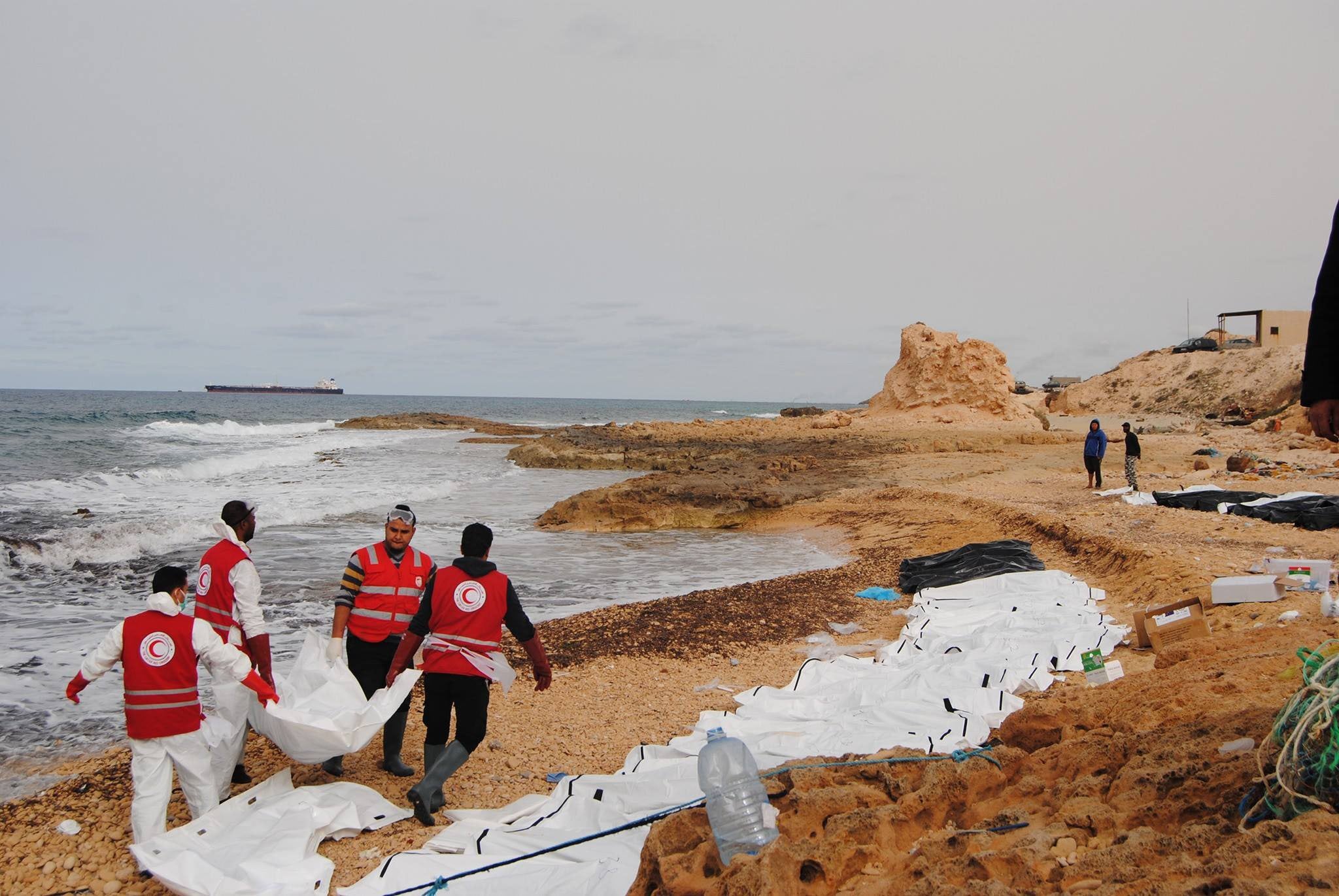
This article originally appeared on Time.
(CAIRO) — Scores of bodies of African migrants washed ashore in Libya’s western city of Zawiya on the Mediterranean, a spokesman for the Libyan Red Crescent said Tuesday — the latest tragedy at sea after migrant deaths rose to record levels along the key smuggling route over the past months.
At least 74 bodies were found in Zawiya, according to Rec Crescent’s spokesman Mohammed al-Misrati, who feared an even higher death toll. He said that a torn rubber boat was found nearby and that he expected more bodies to surface as such boats usually carry up to 120 people.
Subscribe to our daily newsletter for the latest in hair, beauty, style and celebrity news.
Al-Misrati told The Associated Press that the bodies were found on Monday morning and that the Red Crescent workers retrieved them between 1 p.m. and 7 p.m.
The aid agency posted on its Twitter account photographs of dozens of bodies in white and black body bags, lined up along the shore. Al-Misrati said the local authorities would take the bodies to a cemetery in the capital of Tripoli that is allocated for unidentified persons.
Libyan coast guard spokesman Ayoub Gassim said over 500 migrants were rescued at sea on Friday and Saturday off the shore of the city of Sebratha, which is to the west of Zawiya. The migrants’ boats were 5-7 miles from the coast of Libya.
Gassims aid the coast guard is seeing the smugglers use larger rubber boats in order to pile more migrants into the weak vessels — some taking on 180 people — and dramatically increasing the risk to the migrants.
“We are seeing the new boats, which are not equipped with anything, but they carry more people,” he said. “This is going to be even more disastrous to the migrants.”
Last week, Fabrice Leggeri, director of the European Border and Coast Guard Agency, said the Libya-Italy smuggling route across the Mediterranean has seen record numbers of migrant drownings in 2016.
According to Leggeri, migrant deaths along the central Mediterranean route stood at 4,579 for last year, which still might be much less than the true loss of life. That’s compared to 2,869 deaths in 2015 and 3,161 in 2014.
There is little sign of the surge is abating, even during wintertime. There were 228 recorded deaths in January, by far the biggest monthly toll in recent years. Leggeri blamed the very small dinghies and poor vessels used by the smugglers for the high death rate.
Overall, central Mediterranean migrant crossings increased by 17 percent last year to 181,459 people, according to statistics.
In Libya, the turmoil engulfing this North African country has become a death trap for thousands of migrants, most of them from sub-Saharan African countries, seeking to escape poverty and find a better life in Europe.







Libya is split by competing governments and many militias rule on the ground, many of them profiting from smuggling and human trafficking. Rights groups have documented migrants’ horror journeys involving torture, rape, and forced labor inside Libya.
The country sank into lawlessness following the 2011 uprising that turned into a full-blown civil war that led to the toppling and killing of longtime dictator Moammar Gadhafi.
Since then, human trafficking has thrived amid Libya’s chaos.






